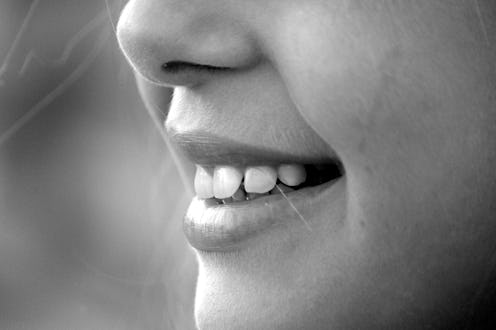Life
How To Stop A Nosebleed
What nosebleeds lack in pain, they often make up for in irritation, embarrassment, and destruction of whatever it is you happen to be wearing at the time. And although how to stop a nosebleed is still very much contested, a doctor from Harvard Medical School has revealed what he thinks is most effective way to stem the bleeding. If you or a loved one if prone to nose bleeds, here's some insight into the easiest way to make them stop.
Nosebleeds, also known as epistaxis, can be caused by trauma, irritation, dryness of the inside of the nose or nasal obstruction — such as in the case of a deviated septum or blockage. Some people are more prone to nosebleeds than others, especially if they were born with structural nose problems, damaged their nose through injury at an early age, or are simply more sensitive to low humidity (which is another cause).
Most of the time, the bleeding starts in the septum — that is, the cartilage that separates nose chambers, which is lined with delicate blood vessels. A nosebleed of this kind is the most common, as well as (usually) the easiest to stop. However, if a nosebleed persists for 15 to 20 minutes, the blood drains into the throat, or if it's suspected that another injury may have caused the bleeding, medical assistance should be sought ASAP.
Remedies for nosebleeds are varied, but the most advice is to tilt your head forward (not back), to prevent the blood flowing into your throat. In a video at Harvard Med School’s blog, Dr. LeWine expands on this age-old tip, demonstrating a more precise technique for stopping a nosebleed:
- First, tilt your head forward.
- Place your thumb and index finger on either side of the bridge of your nose.
- Move your fingers to the point in which the bone gives way to cartilage — what Dr. LeWine calls the "drop off."
- Pinch this area and hold it for a minimum of five minutes or until the bleeding stops.
Sounds simple, right?
The point about tipping your head forward instead of backwards is where it differs from most commonly-shared remedies — but it's very much inline with what most medical professionals advise.
This fairly common-sense advice is in-line with that of a few other medical professionals. Dr. Ben Lam of Raffles Medical School, Hong Kong explained to the South China Morning Post in 2015 why leaning forward matters: It prevents the blood rushing to your throat, which could be really dangerous. "When blood runs down the throat, it may potentially flow down the airway and cause choking," he said. "If the blood is swallowed, it will enter the stomach and may cause irritation. This local irritation can cause nausea, and even pain and vomiting." Yikes.
Dr. Diane Heatley, an ear, nose and throat specialist for children, echoed the pinch-and-hold method in a piece on the University of Wisconsin-Madison School of Medicine and Public Health's website, noting that an ice pack is also useful as, much like your fingers, cold surfaces work to constrict blood vessels in the nose. However, she also said that these cold items must be applied to the nose only — so if you've heard others tell you to place an ice pack near your neck or mouth, it wont help. Said Dr. Heatley, "A cold cloth or small ice pack on the bridge of the nose will also slow blood flow by constricting blood vessels. ... But an ice pack on the back of the neck won't do much."
Heatley believes that most "nosebleeds result from dryness" and states that the inside of the nose should be kept moist to reduce irritation and therefore the likelihood of bleeding from this area. Applying petroleum jelly to the inside of the nose night, and an over-the-counter saline spray which contains as salt water are two tips she recommends to help reduce irritation in nose canals.
Fun fact: A few hundred years ago, one of the most commonly recommended methods to stem nose bleeding was to plug the nose with something called a "usnea" — a type of moss that grew on corpses (ew). And advice from 16th century England was to wear a (possibly dead) toad on your back.
The discomfort of an ice pack doesn't sound so bad now, right?
